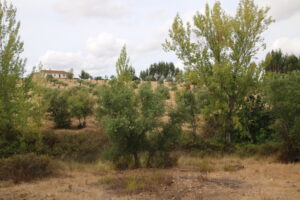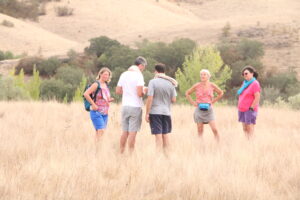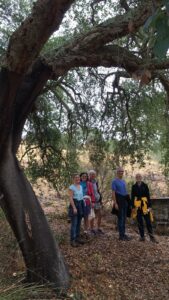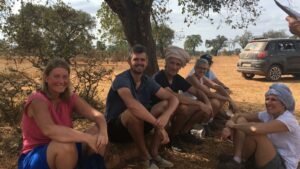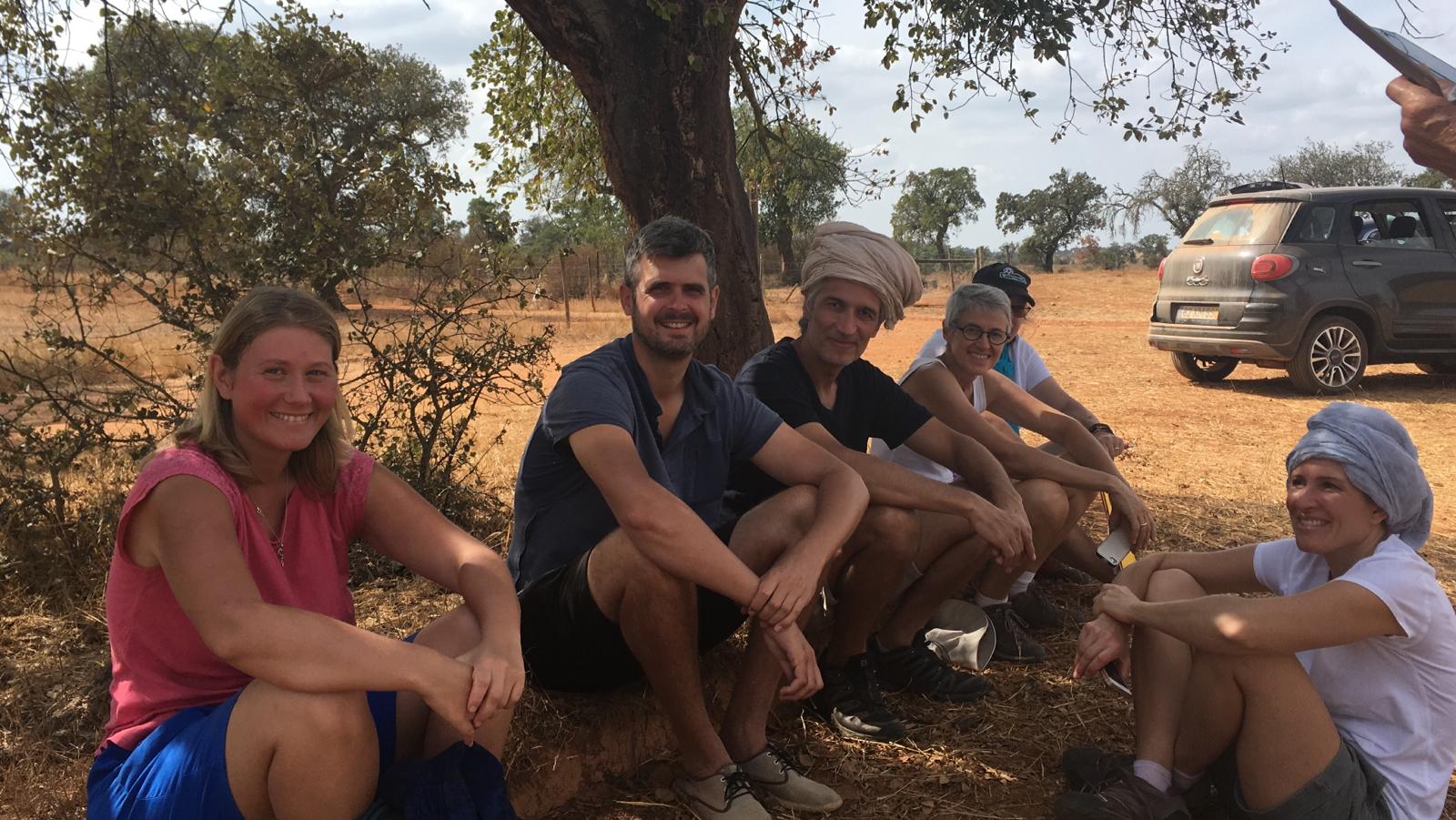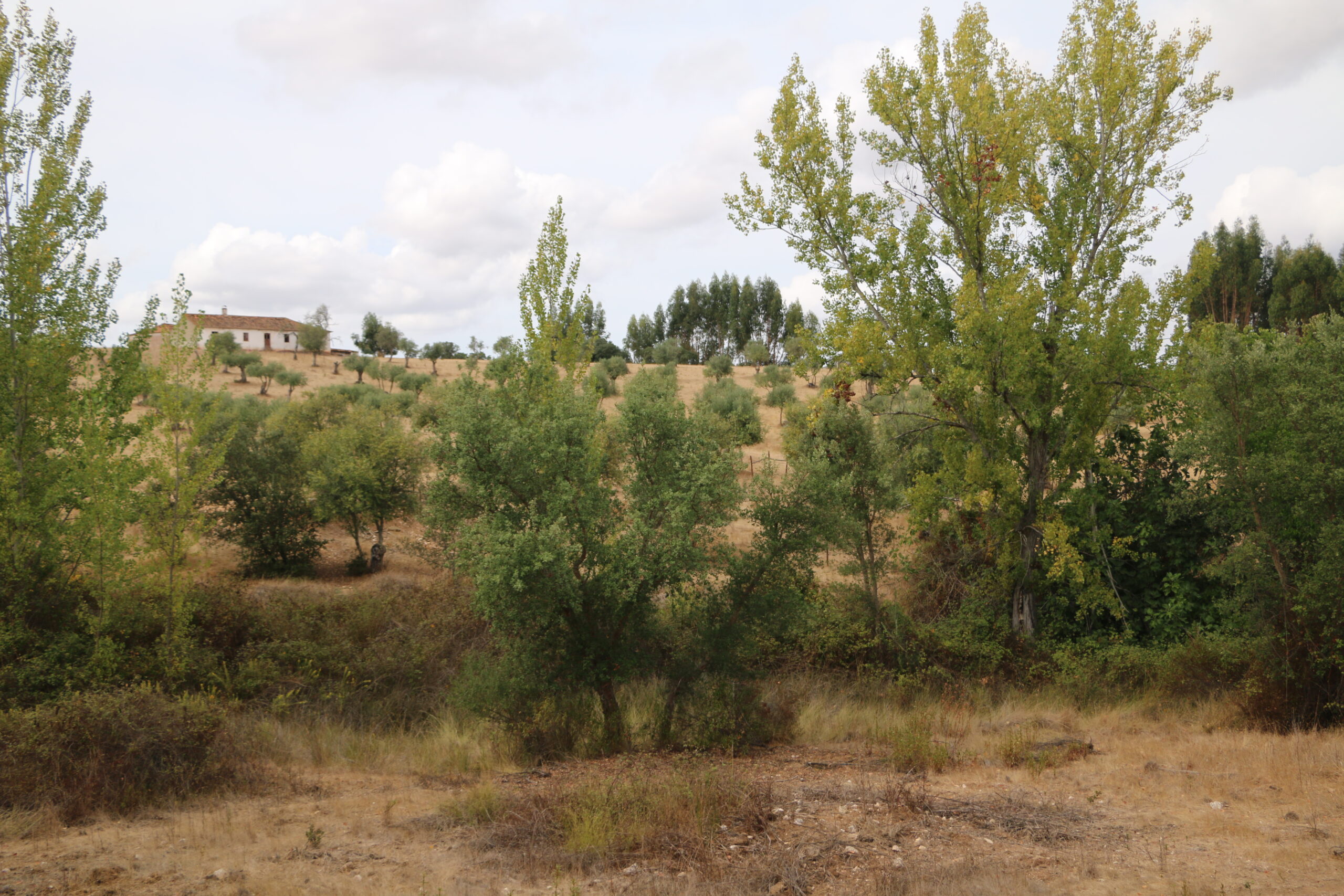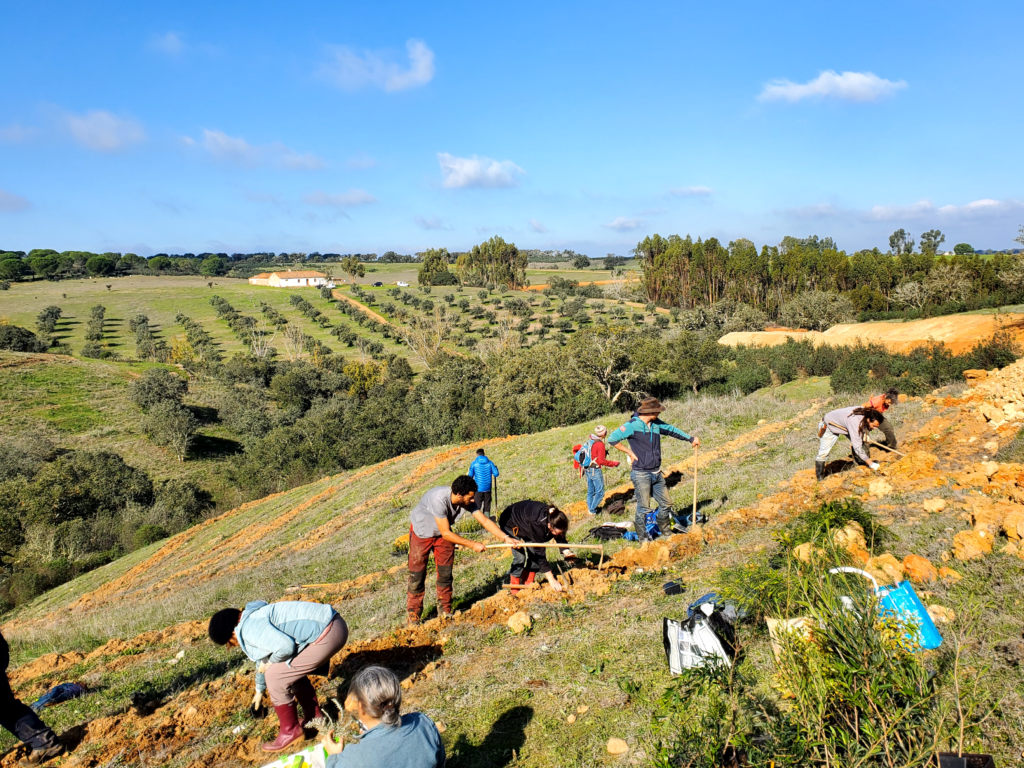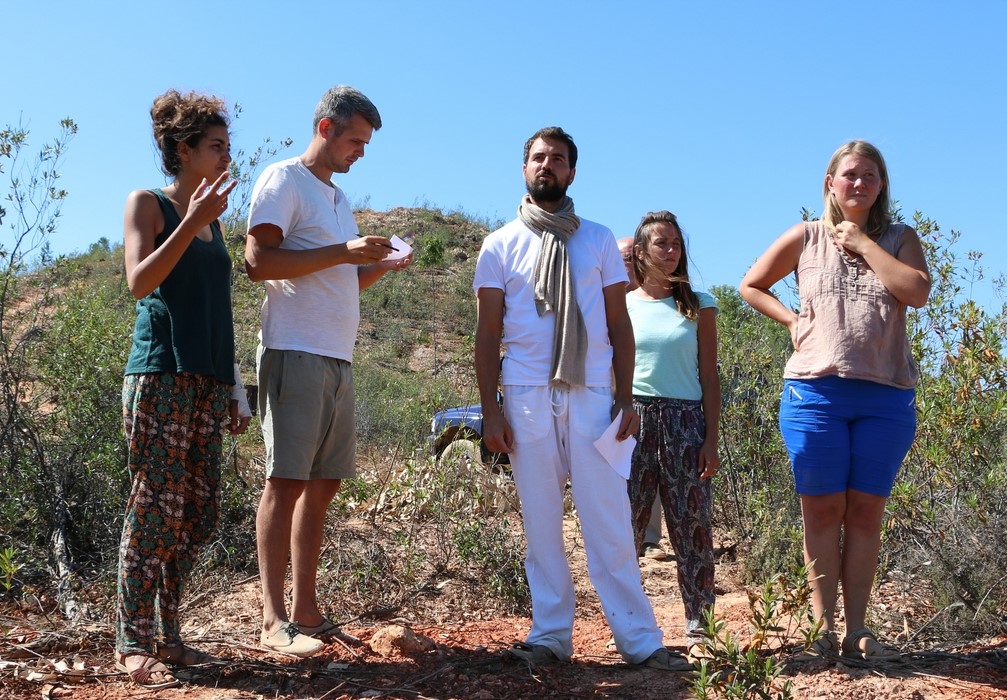In September 2019, just as negotiations for the purchase of the land had begun, a group of us decided to go to the land, with the owner’s agreement, to carry on an in-depth visit of the entire property. This would take several days, as the land is vast and full of small unique spots, so different from each other. We imagined the positions of each building with precision, to visualise the entire project, and we got to recognize a bit more clearly what the project would look like when it would be in a mature phase. It was a very exciting process!
Each house on the plan was marked out with a GPS, and in the most favourable position according to the contour lines, etc. It was a job for a real architect and topographer, and was done in an amateur way, so that the theoretical vision could embrace the land and be adapted as well as possible into reality.
It also gives us the opportunity to see the land from a very different perspective, which shows the potential challenges associated with drought periods in the region, as after a very dry summer and before the autumn rains, most of the land had very dry vegetation. However, water was still present, with wells and springs still rich in water. This provided a glimpse of the non-explored potential of the land to better manage water and moisture on the ground.
It was important to understand that this sense of dryness comes from the type of grass growing naturally on the land, which turns gold after spring, when its growing cycle is finished, and releases its seeds. This is linked to the way in which this type of landscape has been managed and transformed by man since industrialisation, with the excessive use of tractors.
A healthy ecosystem is a combination of a great diversity of plants, from the different strata, and all of them pay an important role to keep this balanced ecosystem. But, throughout time, and to promote the cork production, the ecosystems were reduced to the point that every other tree or shrub that grew underneath the cork trees, were cut down. For decades, tractors have created pastures with very little vegetation under the trees. Only the cork trees and holm trees, that have grown long before, were important, concentrating all the efforts on easy short-term production. During these years, all young trees have been systematically cut down, as well as the shrubs, and the soils have become impoverished, kept alive by an insufficient fertilisation from the herds. This has led to a continuous reduction in vegetation (in quantity and in diversity) and soil richness and had created imbalances that have also had an impact on the health of existing trees. The challenge now is to encourage the creation and the regeneration of ecosystems in these areas, planting new trees and shrubs that have been removed, and that complete this system. Other solutions can be implemented, such as finding an efficient water management strategy, and increasing the organic matter in the soil, in between others.
We’ll be talking more about this soon, as specific actions along these lines are planned.
